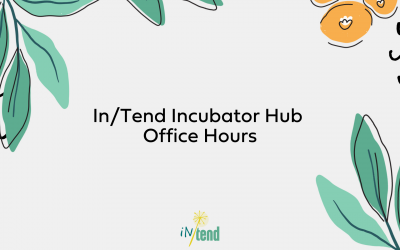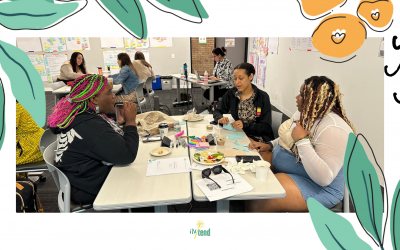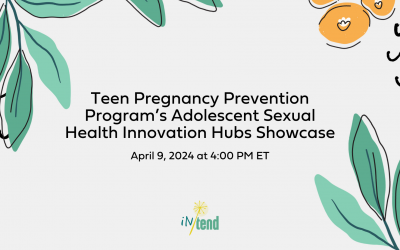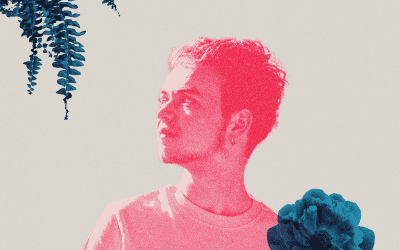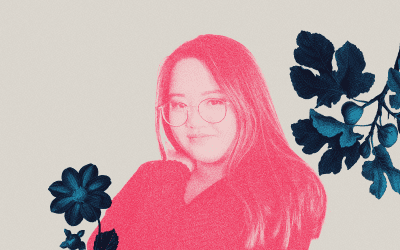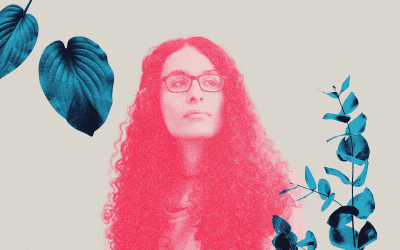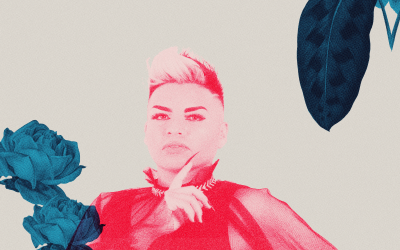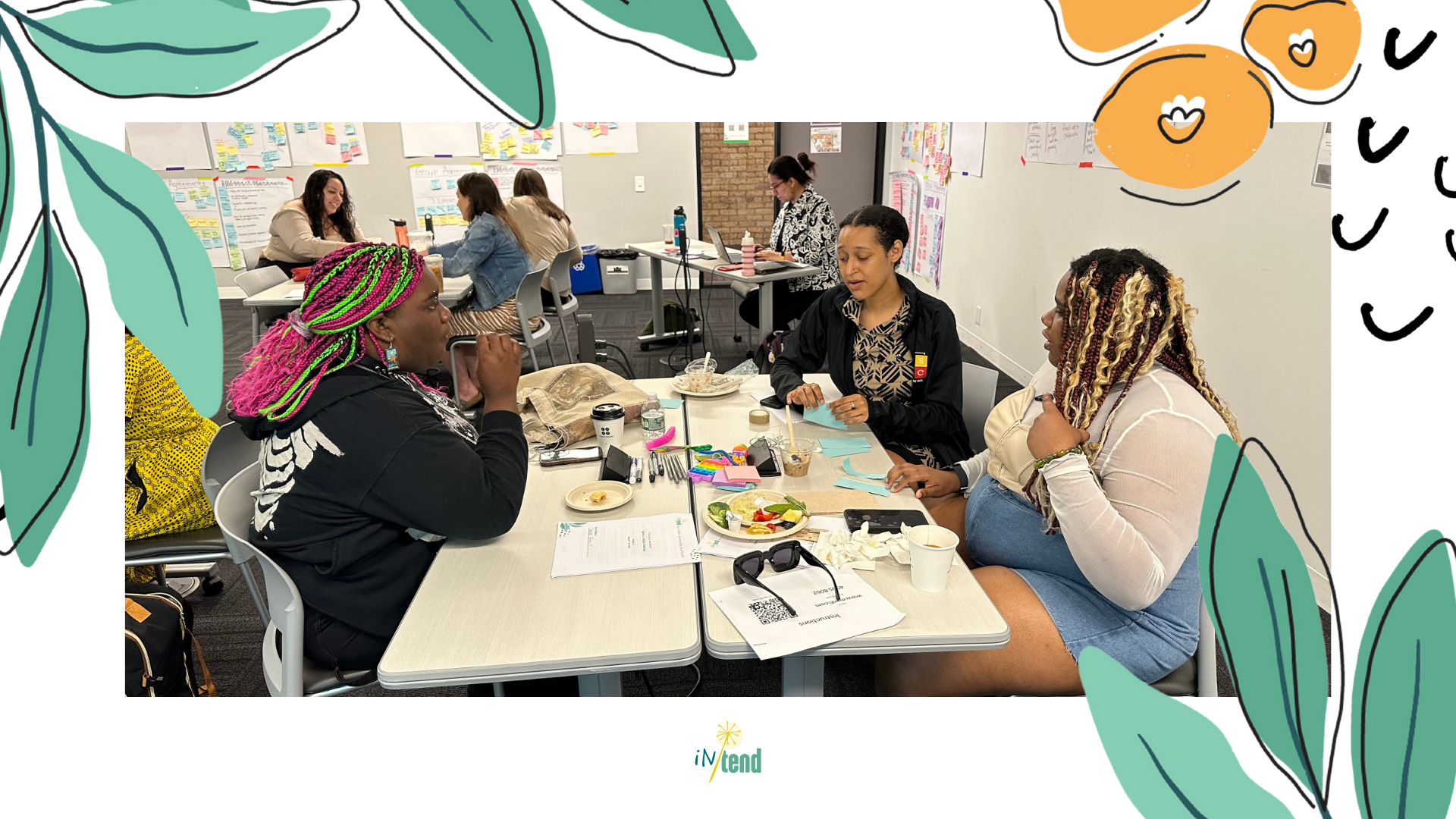
Learn about the ideas that bloomed at Sprout: A Design Challenge and explore the process that nourished creativity, with insights from an attendee.

By Emily (Skywark) Connor

By Deb Coffy
June 13, 2024
For four days in May, seven teams, made up of three individuals each, got hands-on with human-centered design to tackle a real-world challenge at Sprout: A Design Challenge, hosted by In/Tend, the Innovation Hub by Healthy Teen Network. Imagine it as a human-centered design boot camp—lots of learning, lots of doing, with a coach to guide every step of the way!
Over the four days, teams moved through the entire human-centered design process, from challenge definition to user engagement to ideas and prototypes. This opportunity was specifically designed for human-centered design newbies, crafted for teams with little to no human-centered design experience to gain confidence in the skills and mindsets of the methodology by working through a real challenge.
Design challenges are an opportunity to move through the entire human-centered design process, a process that usually takes months, in just a few days.
Design challenges are an opportunity to move through the entire human-centered design process, a process that usually takes months, in just a few days. Human-centered design is an approach to problem-solving commonly used in the development of new products and services that centers the human experience, especially that of the ultimate end user of the product and embraces generative brainstorming for innovative ideas and multiple rounds of testing and iteration. Sprout participants moved through this process in three phases, using the model developed by IDEO.
Inspiration
The Inspiration phase involves understanding the needs and motivations of users through research and empathy, setting the groundwork for design. This phase typically includes challenge definition, which for this learning experience was pre-determined to ensure everyone was working on the same challenge, and no one team had too much additional expertise that would hinder their ability to embrace the learning that comes from user engagement. Therefore, we tackled the redesign of high school student-service learning programs to make them as engaging as a video game. Participants completed secondary research, two user interviews with youth personas, and an analogous inspiration experience.
Ideation
The Ideation phase focuses on generating a wide range of creative ideas and solutions through brainstorming and collaborative thinking. Participants used rapid brainstorming techniques to generate 25+ ideas per team that they clustered into themes and distilled down to a single concept.
Implementation
The Implementation phase involves turning ideas into tangible products or services through prototyping, testing, and refining based on feedback. Participants developed increasingly complex prototypes of their concept, improving the design based on feedback from other teams and user personas.
Human-centered design teaches us that there is no one better to teach us about an experience than the ones who lived it. To learn more about Sprout, please enjoy this post-challenge conversation between Emily, a design coach and challenge facilitator and Deb, a Thrivology Youth Leader and Sprout participant. View the prototype Deb’s team, Black Lavender, created.
Emily: “Hi Deb! It is so good to see you again. Tell me, what motivated you to participate in the design challenge?”
Deb: “I saw the opportunity and was thinking it’ll be really good for us [Black Lavender] because I know my friends, Alexis Pittman and Mari Tomlinson, have done research in the past, and I have an interest in continuing my research journey, so I reached out to them in our group chat to set up a Zoom call. We discussed it, and then we decided, ‘Okay, let’s apply for it!’
“We saw in the application that we had to submit a video, so we planned out what we wanted to do, script-wise because we wanted to showcase our skills and who we are. We decided to meet at this Botanical Garden in Winter Park, close to Orlando, and shoot outside. It was really fun being able to utilize the ‘I’m passing the phone’ trend from TikTok to convey our passion behind reproductive health and reproductive justice, showcasing, our friendship, and wanting to be part of this design challenge.”
Black Lavender’s application video.
Emily: “I remember the feedback that you got from other participants right at the end of the challenge was that your final product reflected both who you all are and the design process; it was really good mix. Thinking about where you ended up, I love getting to hear about the beginning of your story working together. What was the process like of getting to that final design?”
Deb: “I’ve been involved in research in different ways, but I never really saw the process of looking at problems outside of literature reviews and conducting interviews or surveys in academia. This felt completely different. With Black Lavender, I got to see the problem and get feedback from those who were facing the problem first rather than only asking questions about what we saw was missing as a group. We were able to work with other groups to get feedback repeatedly on our prototype to make it better.”
“We had to make sure that what we were doing was not just to do it but that people who needed it would utilize it. With each piece of feedback we received, we tweaked what we might need to remove, add, or keep. I really enjoyed that process a lot because it was nice to work through things in separate stages instead of rushing them all together.”
Emily: “Yeah, we worked through things in those three phases: inspiration, ideation and implementation, and then in smaller activities within each phase. What phase did you find most fun and engaging?”
Deb: “I like the process where we came up with all these different ideas from the inspiration stage. It was interactive and really nice being able to take the sticky notes on our large paper and just come up with endless ideas and then, from there, group the different ideas together with our teammates and see, ‘Okay, these two stickies go together, and these 3 go together.’ I know as a Thrivology Youth Leader, we did a lot of that with the research we do and provide feedback on through Miro [a virtual sticky board], so it was really nice to see that happen in person as I’ve seen it happen over Zoom.
Emily: “Cool, yeah being able to actually pick up your ideas and move them around is such an engaging way to do ideation. Which of the phases was the most challenging for y’all?”
Deb: “The inspiration was a little bit challenging. It was so nice to figure out what the problem is and see the different perspectives within it. However, I felt that sometimes, it’s so easy to want to rush through things because of the eagerness to get to the end product. I really appreciate how this challenge really pushed me to slow down. I think that’s really important, instead of always just rushing into it. With the focus on Student Service Learning, it was different than I was expecting. We were informed that it wouldn’t be reproductive justice based, that that would be part of In/Tend.”
“Because I haven’t been in high school for a while, it was cool to go back and think back to what it was like for me and what I would have liked to utilize to grow as a person while navigating being a teenager and the missing pieces that existed at the time. Since I graduated from high school in 2018, I also had to acknowledge the differences then compared to now with the Pandemic and navigating it as we are post-lockdown.”
Emily: “Yeah being able to put yourself in the shoes of the user is both hard and rewarding. As you reflect on the whole experience, what advice would you give others considering participating in a design challenge?”
Deb: “I would really say be yourself when applying. You can be honest about your experience. This challenge design will teach you all the skills you’ll need to know, and you’ll have facilitators who will support you. Dive into your creativity to stand out and be proud of the skills that you and your team have learned and earned that have brought you to this point!”
“I felt really comfortable during the design challenge, and I felt I could just be myself while being in an educational, interactive, and fun space. I think so many people bring so many different aspects of themselves when they do different things, and it can sometimes be intimidating to feel like, ‘Oh, I don’t have as much experience, and maybe I shouldn’t apply,’ but I think if you’re interested in doing Sprout next year or doing anything with Healthy Teen Network you don’t have to know every single thing.”
“I knew a little bit about human-centered design through Thrivology, but I really gained more confidence through this design challenge in knowing more about what it can do. So, I think being yourself and open-minded are things you need to bring. I think that anyone who’s really interested in getting out of their comfort zone and bringing themselves to the table should definitely apply next year.”
Interested in learning more about In/Tend and our future opportunities? Sign up for our email list. Hint…more info coming by the end of June!
Emily, MPH is a Design Coach who is a facilitator and trainer in innovation and research strategies, including design thinking, strategy, and change management. She believes that everyone is an innovator and that when we empower people with the tools and freedom to get creative, we end up with remarkable ideas! Emily loves cliche long walks on the beach and exploring new cities. Read more about Emily.
Deb (they/she) is a mental health and social justice advocate, researcher, and writer based in Orlando, Florida. For 5+ years, they have been involved in the fields of mental health, advocacy, and communications. They joined Thrivology Youth Leaders to expand their research interests out of psychology and to grow within their activism for reproductive justice outside of just abortion.

